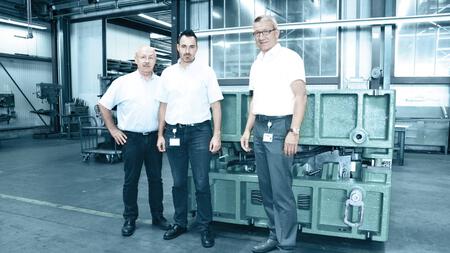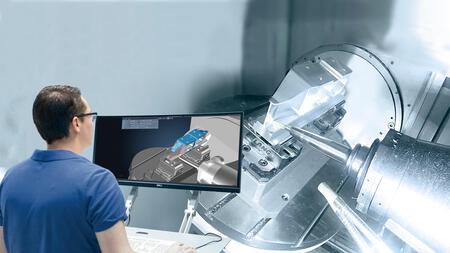Tebis simulation technologies: No compromises
In this technical article, you will learn more about the Tebis approach, which enables you to manufacture collision-free...
Safe manufacturing is collision-free manufacturing. And fast manufacturing means optimally utilizing the machines and accounting for all components with ideal traversing and retract movements. The Tebis CNC simulator unites reliability and speed.
An example from practice ….
While searching for a new CAD/CAM system, die manufacturer GEDIA Gebrüder Dingerkus GmbH from Attendorn, Germany, had a clear goal in mind: unattended manufacturing over the weekend – which only works if all machines operate continuously with no interruptions. GEDIA ultimately chose Tebis. Hermann Geueke, head of machining, justifies his decision: "To reduce our collision rate to zero and to avoid time-consuming checking after postprocessing, we needed a simulation of the machine model and the tools in the virtual world that had millimeter accuracy."
Collision-free manufacturing – the efficient approach from Tebis
Many CAM systems only simulate the output NC code. Only then can the NC programs be adjusted in the control-specific NC format – this is not especially convenient for the NC programmer or the machine operator and requires additional communication. Tebis therefore takes another approach: The NC programs are completely collision-checked before postprocessing. Essential prerequisite: It must be possible to simulate the real manufacturing environment in the virtual CAD/CAM world with no ifs, ands or buts. Tebis achieves this with intelligent process libraries.
Digital process libraries for greater safety
Tebis supports all common machine types from various manufacturers on the market and their geometrical and kinematic properties. The machine library contains more than 1,400 models in 3,700 variants – including multi-axis, gun drilling and multifunction machines, such as turn-milling machines and lathes with a main and secondary spindle.
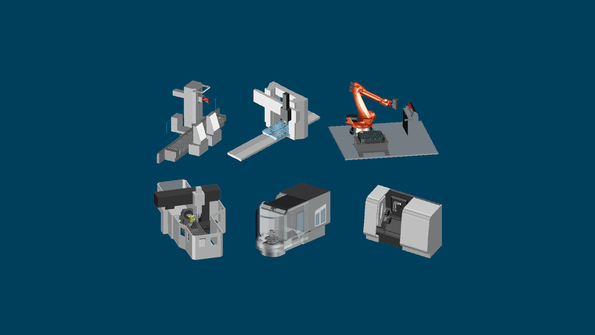
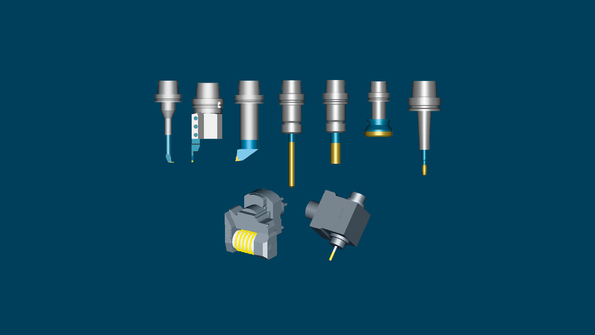
There is no tool that cannot be represented in the Tebis tool library. Precision is key: Tebis accounts for the contours of the tools with absolute accuracy. Modern high-performance tools – like HPC cutters (high-performance cutting) for roughing, HFC cutters (high-feed cutting) for finishing and prefinishing and circle-segment cutters for finishing – can therefore be used with perfect results.
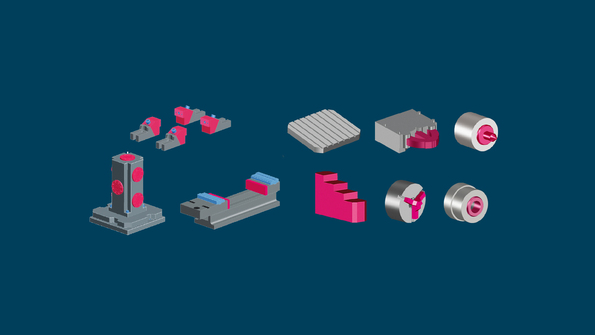
Other equipment like jaw chucks, steady rests and tips as well as machine tables, mounted parts and partitions are stored in the unit library. The portfolio also includes virtual clamping devices.
Controlling rather than being controlled
The manufacturing environment could not be precisely simulated without high-precision process libraries. But the CNC simulator can do even more: It checks the complete machining scenario with all of its dependencies – including tool and table changes, setups, starting points and connection conditions, limit switch limitations and axis and traverse movements. The operator controls the machine at all times. This person controls all the details of what it will do next. For example, retract movements must be optimally adapted to the manufacturing situation: The real world precisely follows the movements in the virtual world.
Automatic milling with maximum safety distance.
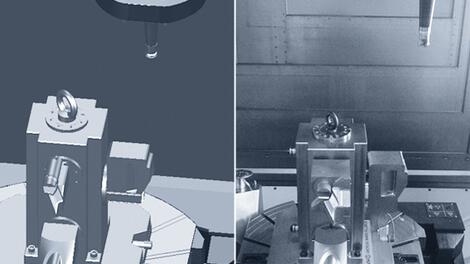
Direct connection with fixed C axis with no safety distance.
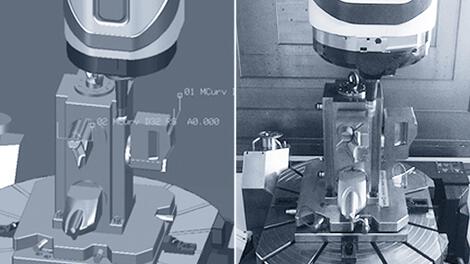
With user-defined macro and reduced safety distance.
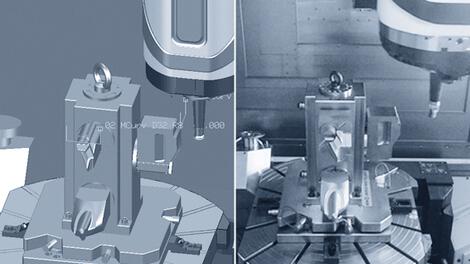
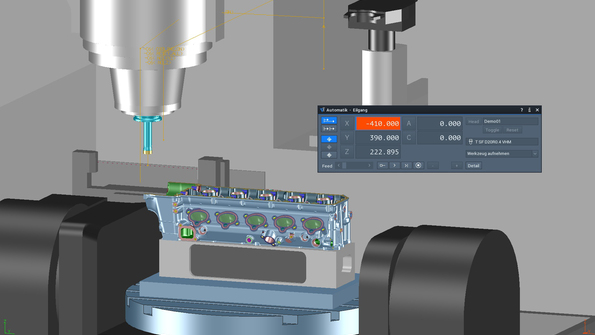
Carsten Wurm, head of the CAM programming team at GEDIA, also has a high regard for the precise machining time calculation in this regard: "(It) … enables us to exchange the sister tools … completely automatically." The machine run times are determined by assessing the machine cycles and the processing speed of the control.
The entire process chain at a glance
The CNC simulator is also a very useful tool for cost estimation and manufacturing planning. Specifying machines, machine heads and clamping devices, selecting shuttle tables and tools, defining reference points, determining the number of machining operations, displaying and avoiding potential collisions – this is all done prior to NC programming. This lightens the load on the NC programmer, who can focus exclusively on the core task. The programmer uses the libraries and the manufacturing knowledge stored in templates to automatically generate collision-tested NC programs.



